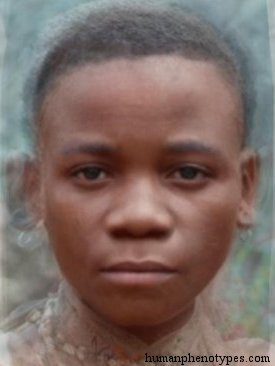Description:
Bambutid proper: shortest pygmy type in the world with an extreme rainforest adaption that has evolved since the Middle Paleolithic. Historically more widespread, still found in the Ituri forest of DR Congo, among Mbuti, Asua, Kango, and Efe. Loss of culture and forest destruction could make this unique type vanish forever soon.Physical Traits:
Dark, sometimes medium (reddish) brown skin. Brown-black, rarely blonde peppercorn hair. Very short (males 140-145 cm), (hyper-) macroskelic, mesomorph, infantile. Mesocephalic, orthocranic. Hyperplatyrrhine. Face round, prognathy weak, receding chin, upper lip convex, lips rather thin. Relatively hairy body. Weak steatopygia.Literature:
Detailed investigations were made by Schweinfurth (1878), Schebesta (1952) , Froment (1993) and Gusinde (1956), the latter measured more than 900 individuals and classified it as Twid. Eickstedt (1934) coined the term Bambutid, this was kept later (Lundman, 1967; Baker, 1981; Knussmann, 1996). Biasutti (1967) separated the BaMbuti and the BaBinga group like Cole (1965), who called it the East Negrillo type. Split occurred some 20k years ago (Patin, 2009).





